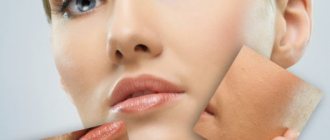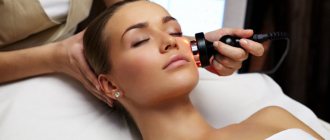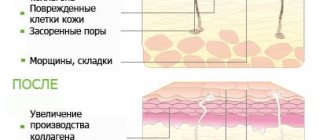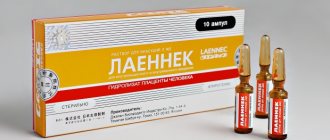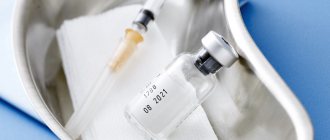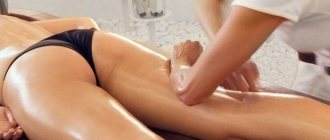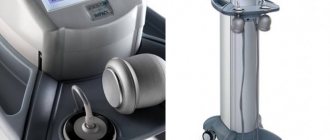1422
Author of the article
Evgeniy Nikolaevich Konoplev
Reading time: 5 minutes
AA
Ozone is a blue gas that is a specific modification of oxygen. In large doses, it is a very harmful substance for humans and has carcinogenic and mutagenic effects. Despite the danger, the compound is used for medical purposes. In practice, ozone is used only in private clinics, since it is not officially a therapeutic agent.
What is intravenous ozone therapy?
The technique is based on the healing properties of gas obtained using special ozonizers from oxygen. Ozone therapy is a treatment with a mixture of ozone and oxygen, while the proportion of ozone itself in the gas composition is small (about 2-4 mg per 1 liter of oxygen).
But it is this small additive that activates oxygen and makes it more effective. Ozone in correctly prescribed dosages does not damage the body's cells, but destroys the integrity of the membranes of pathogenic microorganisms.
Intravenous administration is carried out by mixing the gas mixture with physiological sodium chloride solution or with the patient's blood. When gas is passed through a saline solution, a concentration of 4-6 mg/l is achieved.
Major ozone autohemotherapy consists of mixing gas (50-300 ml with an ozone concentration of 5-30 µg/ml) with previously taken blood (50-150 ml) of the patient and administering the resulting solution intravenously through a dropper.
The use of an ozone-oxygen mixture without a solvent is undesirable due to the risk of gas embolism, which is often fatal. No matter how thin the needle is, an air bubble can clog the vessel and lead to irreversible consequences.
Air injections are performed intramuscularly in problem areas for:
- relieving inflammatory processes;
- improving cell nutrition;
- volume adjustments.
When carrying out ozone therapy for medicinal purposes, the effect is achieved not by the use of ozone itself, but by its effect on cell membranes, through which the prescribed drugs quickly penetrate inside and have a therapeutic effect.
This results in a clinical effect. The effect of antibiotics is also enhanced, which is used in the treatment of serious infectious diseases. Therefore, the method is positioned as an auxiliary one against the background of the main drug treatment.
Don't miss the most popular article in the section: Hyaluronic acid in tablets. Benefits, how to take, reviews from doctors and effectiveness.
Scope of application of the method
The intravenous administration of an ozone-oxygen mixture provides a complex effect:
- antibacterial;
- anti-inflammatory;
- pain reliever;
- healing;
- immunostimulating;
- cleanses of toxins.
The use of ozone therapy intravenously is necessary in the treatment of inflammatory and infectious diseases:
- Elimination of oxygen starvation of tissues and organs allows the use of intravenous injections for hypoxic lesions.
- Accelerating metabolic processes in the intra- and intercellular space helps with reduced metabolism and promotes weight loss.
- The ability of ozone therapy to normalize hormonal levels allows the method to be used in the treatment and prevention of diseases of the endocrine glands.
- Cleansing the body of toxins and waste with ozone helps with poisoning.
Application of ozone in the field of cosmetology and aesthetic medicine
Ozone therapy is quite popular today. Below are the most common areas of application of ozone-oxygen mixture treatment.
For dermatological and cosmetological purposes
The use of ozone in the field of dermatology allows you to rejuvenate the skin and restore tone. Most skin problems associated with age-related changes begin to bother a person due to oxygen starvation of the tissues.
Against the background of nervous exhaustion and heavy physical labor, lack of a balanced diet, tissue hypoxia occurs. The skin loses its former attractiveness and becomes flabby. Age-related wrinkles and fat deposits accumulated over many years only aggravate the situation.
Carrying out a course of intravenous ozone therapy can prevent the development of hypoxia and rejuvenate the body. The result obtained lasts for many years.
For face
The effects of ozone on the skin of the face vary in intensity. At a high concentration, the skin is disinfected; at a medium concentration, pain can be reduced and inflammation can be reduced. If you use low intensity, the patient will be able to achieve healing and rejuvenation of the skin.
Ozone therapy for the face is performed by injecting gas into the subcutaneous area where wrinkles are concentrated. Quite quickly, blood circulation accelerates and cells are regenerated. The technique allows you to effectively deal with:
- wrinkles;
- swelling;
- circles under the eyes;
- age wrinkles.
To achieve maximum effectiveness, you need to complete 5 sessions, which are not only effective, but also absolutely safe. After the fifth session you can see stunning results. The wrinkled mesh will smooth out, skin turgor will increase, and the skin will take on a radiant appearance.
For body
Ozone therapy is often used for body contouring. With the help of a course of sessions, you can forget not only about obesity, but also about stretch marks on the skin and manifestations of cellulite. Ozone injections allow you to quickly burn fat cells.
Injections should be administered directly into problem areas.
To achieve maximum results, 10-12 sessions will be required, with a break between them of 2-3 days.
For weight loss
Ozone does not tolerate proximity to fatty nodules, so it is often used to get rid of excess weight. The specialist injects a gaseous substance into each problem area, which helps break down the fatty nodules. To rejuvenate the body, in addition to ozone injection, the patient is given a special massage, which makes it possible to evenly distribute the ozone-oxygen mixture.
After ozone injections, the skin looks tightened, tissues receive more oxygen, and blood circulation accelerates.
The benefits and harms of the procedure
Intravenous ozone therapy affects the entire body. Doctors speak of it as a potential method that can solve many health problems.
The main positive features of therapy are:
- stimulation of the body's immunity and defenses (antibacterial, antiviral, antifungal, immunostimulating effects);
- increased blood fluidity;
- obtaining and assimilation of oxygen by body tissues (especially important during hypoxia).
The main disadvantage of the method is the insufficient knowledge of its effect on the body. Excessive dosage of ozone can lead to the release of free radicals, which affect cell membranes and destroy cells. As a result, pathological mechanisms are triggered, leading to various diseases, including oncology.
It is important not to exceed the permissible dose of the gas mixture. Failure to comply with dosages can lead to:
- intoxication of the body;
- breathing problems;
- damage to the mucous membranes of the eyes,
- triggering the process of premature cell aging.
The positive qualities of the method can also cause harm if the individual characteristics of the body are not taken into account. For example, increased blood flow in the presence of blood diseases can lead to leukopenia.
Common cosmetic procedures
The most popular procedures in cosmetology are weight loss and rejuvenation procedures. Many patients use this therapy to successfully strengthen their hair. However, do not forget that you should initially study the benefits and harms of ozone therapy for weight loss or another procedure. We will talk about the disadvantages of the event later, but now we will consider the beneficial effects on the body.
Cosmetologists say:
- Ozone therapy for weight loss provides excellent results. The procedure improves microcirculation, blood circulation, promotes vasodilation, and activates metabolism. Thanks to such effects, fat cells are destroyed. This contributes to the excellent elimination of cellulite.
- Ozone rejuvenation is an equally effective procedure. In cells enriched with oxygen, the production of elastin and collagen increases. As a result, they retain moisture well. This effect allows you to eliminate wrinkles, unevenness, get rid of inflammation, give the skin elasticity and smoothness.
Indications for use
Intravenous ozone therapy (reviews from doctors confirm this) is used as the main or auxiliary method in the treatment of various diseases. Many cases require local administration of ozone (for example, cosmetic problems), but good results are also achieved with intravenous drips.
The most common indications for ozone therapy are:
- sedentary lifestyle;
- infectious diseases;
- bronchial asthma and other lung diseases;
- gynecological diseases (including virus carriage);
- genitourinary infections;
- diabetes;
- atherosclerosis;
- autoimmune diseases;
- venous insufficiency;
- hepatitis of a viral, toxic nature;
- hypertensive, coronary heart disease;
- vascular diseases of the brain;
- vertebral artery syndrome;
- arthrosis;
- osteochondrosis;
- allergic manifestations;
- in surgery in the presence of a purulent inflammatory focus;
- age-related skin changes;
- decreased turgor;
- to reduce cellulite;
- fight against fat deposits, figure correction;
- acne treatment;
- chronic fatigue syndrome.
Benefits, indications
Ozone therapy is a method primarily aimed at enriching tissues with oxygen. This means that it will be effective in eliminating those shortcomings that are caused by hypoxia - lack of oxygen. When administered intravenously, ozone stimulates a number of biochemical reactions that accelerate cell metabolism and red blood cell activity. The external influence is more limited, however, the activation of blood microcirculation and the improvement of trophic processes in the skin are very noticeable.
The video shows indications and contraindications for ozone therapy:
Indications for the use of ozone therapy are the following defects and diseases:
- Aging – loss of skin turgor, sagging, pallor, fine wrinkles, etc. Almost all of these defects are associated with insufficient oxygen and nutrients in the blood. With the help of injections or massage, oxygen is delivered directly to the bloodstream or skin tissues, which naturally compensates for hypoxia and associated cosmetic defects.
- Elimination of scars, large wrinkles, sagging - ozone stimulates cell metabolism, which significantly accelerates skin regeneration. This technique is used in traditional medicine in the treatment of burns, its effectiveness is undeniable.
- Removing spider veins, acne, rosacea - a gas mixture for external use is more effective here, since unpleasant formations in the upper layer of the skin need to be eliminated. Ozone therapy regulates the functioning of the sweat and sebaceous glands, which prevents the recurrence of the rash.
- Elimination of edema - ozone improves blood circulation, and this, in turn, stimulates the functioning of the lymphatic system. In this way, you can get rid of not only edema, but also fatty tissue.
- Improving blood circulation allows the use of ozone therapy against cellulite. The reason for the formation of the latter is a poor blood supply to fat cells, which as a result accumulate fat instead of giving it to the body's needs. Massage, wraps, injections with an ozone-oxygen mixture provide a stable, quite noticeable result.
The video shows indications and contraindications for intravenous ozone therapy:
Contraindications to ozone therapy
Like any intervention in the body, the method has contraindications:
- blood diseases accompanied by a decrease in the number of platelets, decreased blood clotting (hemophilia, thrombocytopenia);
- tendency to bleed;
- menstruation;
- increased thyroid function;
- tendency to seizures;
- epilepsy;
- acute pancreatitis;
- acute heart attack;
- acute stroke;
- age under 18 years;
- chronic alcoholism.
Don’t miss the most popular article in the section: Plasmolifting of the face - what it is, how it is carried out, results, photos before and after the procedure.
Types of ozone therapy
There are several ways and means of introducing the mixture into the body for therapeutic purposes:
- intramuscularly;
- intravenously;
- intra-articularly (directly into the joint);
- periarticularly (into periarticular structures - muscles, intermuscular formations, mucous bursae);
- intravaginally (inside the vagina);
- rectally (into the rectum);
- subcutaneously;
- inside (in the form of drinking, rinsing with ozonated water or oil);
- externally (ozone baths, irrigation, carbonation in a plastic bag, applying ozonated oil, wearing ozone boots).
Most often, the mixture is injected into trigger or acupuncture points. In one session, 5-12 points are affected. Many methods of ozone therapy have been described, the most popular:
- Ozone droppers are needed for intravenous ozonation of blood. This is the most difficult method and requires a highly qualified medical professional. For the procedure, a sterile saline solution is used, which has been subjected to ozonation. Indications for the use of ozone droppers include infections, viral, skin diseases, inflammatory, degenerative-dystrophic changes in the joints, spine, gastrointestinal diseases, fetal hypoxia, oncology and many others, in which the effects of ozone therapy are important. If there are a large number of indications for the use of intravenous ozone therapy, it is important to consider additional contraindications. They are in addition to general medical contraindications. Thus, droppers are prohibited for pathologies of the blood, endocrine system, recent heart attack, stroke, pancreatitis, alcohol intoxication, and during menstruation. They are also contraindicated for children (under 18 years of age). If the patient has a vascular disease, it is necessary to obtain the approval of a physician.
- Minor autohemotherapy with ozonated blood involves intramuscular or subcutaneous injection (usually into the buttock) of the patient’s own fresh venous blood mixed with an ozone-oxygen mixture. Major autohemotherapy is similar, but involves repeated intravenous administration. This ensures stimulation of the body’s own defenses to fight the disease or defect. The procedures allow you to get rid of inflammation, bacterial damage, cleanse the skin, and smooth out wrinkles. They are practiced in gynecology, urology, and are effective for chronic conditions that are difficult to treat.
- Rectal insufflations are procedures for introducing an ozone mixture using a syringe with a rectal tip. An effective and safe method. What is it used for: for intestinal disinfection, for urological problems, worms, Crohn's disease, anal fissures, diseases of the digestive system, genitourinary system, kidneys.
- An ozone capsule is a dry (air) bath, which allows us to classify this procedure as an external ozone therapy method. In this case, ozone does not enter the blood, so there are practically no restrictions on its use. The capsule is indicated for relaxation and improvement of general condition. During the procedure, a limb or the entire body is placed in a special box into which ozone is injected. This is usually combined with a gentle vibration massage. External procedures are considered less effective.
Indications during pregnancy
Ozone therapy intravenously, reviews from doctors indicate this, is used for pregnant women with disturbances in the process of bearing a child. A growing body needs oxygen, and if a woman has health problems or does not follow a healthy lifestyle, its supply to the fetus decreases.
Indications for the procedure are:
- toxicosis;
- gestosis;
- placental insufficiency;
- fetal hypoxia;
- intrauterine infection.
Contraindications
And who is the procedure contraindicated for?
CONTRAINDICATIONS
- problems with blood clotting;
- congenital glucose deficiency;
- acute stage of stroke or heart attack;
- complex form of diabetes;
- alcohol intoxication;
- epilepsy;
- individual intolerance to ozone;
- pathologies of the thyroid gland;
- internal bleeding of any origin;
- pancreatitis;
- cardiac and vascular disorders.
It is worth noting that intravenous ozone therapy is allowed when carrying a child and breastfeeding. Unlike many cosmetic procedures, ozone during pregnancy often helps to cope with a number of pathologies.
Doctors also recommend it as a prophylaxis against colds and viral (infectious) lesions. Such therapy is prescribed in case of threatened miscarriage.
Since ozone in small concentrations has a moderate hypocoagulant effect, during ozone therapy, any medications that reduce blood clotting are avoided.
It is not advisable to give injections if women have reached their “critical days”.
Plastic surgeon Brian Reedy
Safety rules before and after treatment
In order for the procedure to bring maximum benefit and not cause harm, you must provide the specialist with truthful information about yourself. Any little thing can be important and lead to complications during the session. If the doctor asks you to take additional tests, this must be done.
Ozone is a strong oxidizing agent. Its action is based on this and this same property can cause harm. Therefore, it is important to strictly adhere to the prescribed dosage and number of sessions. At the same time, it is advisable to drink antioxidants - vitamins A, E, C. You should consult your doctor about the time of taking them and dosage.
Intravenous ozone therapy is not performed on an empty stomach or after a heavy lunch. It is advisable to have a small snack beforehand.
According to doctors, you should not smoke for at least 30 minutes before and after the session, as otherwise there is a high risk of developing dizziness.
You should carefully study information about the clinic offering services and the doctors working in it. Any doubt about the quality of materials or the competence of specialists should be a reason to choose another institution.
It is important to make sure that the treatment room has a resuscitation kit and antiallergic medications. Side effects can be very serious and the clinic is required to have everything necessary to keep the patient alive until the ambulance arrives.
Stages of ozone therapy
Before using the method, consultation with your doctor is necessary. In addition to the problems that the patient wants to get rid of, it is necessary to talk about all existing diseases in acute or chronic form. This is important for identifying possible contraindications to intravenous ozone therapy. Next, it is discussed what kind of mixture will be administered (with blood or saline).
The doctor prescribes:
- dosage;
- concentration;
- volume of injected solution.
A minimum number of sessions is prescribed to achieve the desired result, and the maximum duration of the course of therapy is specified.
Before the procedure, the patient lies down on the couch. If large ozone autohemotherapy is carried out, then the required volume of blood is first taken from him. Next, a gas mixture is passed through saline or blood and an IV is immediately placed.
After the procedure, you need to rest for about 15 minutes - lie down or sit quietly. Any side effects should be reported to your doctor right away, especially if they do not go away or get worse over time.
How does the intravenous ozone therapy procedure work?
To carry out ozonation of blood, a specialist uses a special preparation with which a mixture of ozone and saline solution can be generated. Generation is performed right before the procedure. In cases where it is necessary to make a solution with blood, 150 ml of blood is taken from a vein from the patient. After this, it is added to the mixture of saline and ozone.
Preparation for the procedure
Before performing intravenous ozone therapy, it is important to undergo preparation, namely:
- stop drinking alcoholic beverages 24 hours before the procedure;
- stop smoking a few days before the scheduled session;
- an hour before the session, eat some easily digestible food;
- Before performing a procedure with an oxygen drip, limit physical activity.
Stages of implementation
First of all, the specialist must determine the dosage and concentration of the solution for the patient. Then the duration of the course of ozone therapy, which will help cope with the problem, is discussed with the patient.
The ozone drip session is carried out in stages:
- The patient is placed on the couch in a lying position.
- The doctor draws blood if necessary for the procedure.
- The gas mixture is passed through blood taken from the patient or through saline solution.
- The patient is placed on a drip with ozonated saline solution.
- After the procedure, the patient should remain in a lying position for 15-20 minutes.
If any side effects occur after ozone injections, it is important to immediately inform your doctor.
The procedure is performed by a trained ozone therapist!
Duration, how many sessions needed
Each intravenous ozone therapy session lasts about 20-30 minutes. A longer treatment time is not advisable, since ozone loses its positive properties after 30 minutes.
To prevent most pathologies, doctors prescribe 5-7 sessions of ozone injections, and treatment will require at least 10-12 procedures. The attending physician should determine the duration of intravenous ozone therapy, taking into account the patient’s health status and history of pathologies.
Sessions are best done every other day. Daily procedures are prescribed only in severe cases.
Rules of conduct after the end of the session
After the ozone drip session ends, you need to lie down in silence for at least 20 minutes. It is also important after ozone drips to limit physical activity and completely eliminate smoking during the day.
Duration of session, course of treatment
One session lasts on average 15-30 minutes, since the ozonized solution gradually loses its therapeutic effect and becomes ineffective after half an hour. In the mixture, ozone retains its healing qualities for about 20 minutes. When using the method for preventive purposes, 3-7 procedures are sufficient. To treat serious diseases, 7-10 sessions will be required.
The duration of the procedure and their number are determined by the attending physician. They are selected depending on:
- patient's health status;
- problems that the method should solve;
- individual characteristics of the body.
Sessions are held every 2-3 days, in exceptional cases - every day or once a week.
What it is
Ozone therapy is a method of therapy using a medical ozone-oxygen mixture, which is endowed with powerful healing properties.
Medical gas restores organ cells and saturates the body with oxygen; with the help of ozone, blood is cleansed.
Ozone is the most powerful antiseptic that exists in nature. A gaseous substance that combines three oxygen atoms is capable of destroying accumulations of bacteria, viruses and fungi.
Gas can be introduced into the body by several methods:
- subcutaneous;
- rectal;
- intravaginal;
- intravenous;
- intramuscular.
Most often, ozone is administered as a dropper into a vein. Thanks to this substance, you can cure most pathologies and cleanse the skin of rashes and ulcers. In addition, thanks to its beneficial properties, the body’s protective functions are strengthened and metabolic processes are normalized.
Intravenous ozone therapy is the process of drip administration of ozonized saline solution through a vein. The procedure is carried out under the supervision of a doctor. Ozone is administered not only for preventive purposes, but also for the treatment of various pathologies.
Medical specialists often recommend ozone therapy for the treatment of infectious viral pathologies in gynecology or urology.
Complications of the procedure, adverse reactions
More often than not, after a session, a person notices lightness in the body and a good mood. If the patient was physically or emotionally exhausted before the procedure, then the opposite sensations may be observed. They are not a reason to stop ozone therapy and pass quickly.
Possible complications:
- drowsiness;
- weakness;
- renal colic;
- allergy;
- frequent urination;
- pain in the vein or around the injection site.
Possible side effects:
- convulsions;
- sepsis;
- increased kidney enzymes;
- anaphylactic shock;
- proliferation of tumor cells;
- pancytopenia;
- hemolysis;
- death;
- Strong headache;
- vision problems;
- psychosis;
- depression.
Ozone injection technique
Intravenous ozone therapy is carried out systemically and locally. Methods that relate to the first option:
- blood is taken from the patient, mixed with an ozone mixture in a certain concentration and injected back into the vein;
- ozonated saline solution is immediately injected into a vein or subcutaneously.
Local intravenous ozonation is when the following are exposed to local effects:
- mucous membranes and skin (external application of ozone composition);
- rectum (to improve peristalsis) and stomach;
- joints.
A bottle of saline solution can be enriched with ozone immediately before the procedure, and then disconnected from the device and the liquid is injected into a vein within 15 minutes - this technique is called “two needles”.
Another option is “three needles”, when simultaneous injection and ozonation occur. This procedure will take more time - about half an hour. It is easier for the patient to tolerate, but more difficult to implement.
After ozone therapy, there are practically no traces left, there is no recovery period and no hospital stay is required. Immediately after the session you can go about your daily routine.
Plastic surgeon Barry Weintraub
The doctor should determine how to administer the ozone-enriched mixture, in accordance with the existing medical indications.
The effectiveness of the procedure: before and after results
Patients after the course of treatment note:
- a surge of vitality and energy;
- improvement of well-being;
- reduction of pain.
The procedure speeds up metabolism, which is why it is successfully used in weight loss programs. If subcutaneous administration of a gas mixture reduces volumes, then intravenous administration helps to lose excess weight (subject to the principles of a balanced diet and physical activity).
According to reviews from doctors and patients, after the introduction of ozone therapy intravenously, the patient’s well-being improves, and when administered subcutaneously, ozone fights cellulite
Outwardly, a person who has undergone the procedure looks rested, with a good, healthy complexion and toned skin. Treatment with intravenous administration of an ozonized mixture eliminates spider veins on the legs and reduces swelling of soft tissues.
There is no clear opinion about the effect of the method on the growth of cancer cells. Initially, ozone therapy was positioned as a means of combating oncology, improving the tolerability of chemotherapy. But now some doctors are confident that ozone provokes the growth of cancer cells.
Reviews from doctors and patients
Intravenous ozone therapy, which has controversial reviews from doctors, causes a lot of controversy about its effectiveness.
It is reliably known that:
- the method does not have scientific evidence of effectiveness;
- the profound effect of ozone on the body can provoke various diseases, primarily cancer;
- the method acts as an auxiliary part of the main treatment - the main therapy is carried out with medications, and ozone helps them get into the tissues faster;
- doctors note the need for a preliminary examination - the patient may simply not be aware of many contraindications;
- experts do not deny the effectiveness of the method, but emphasize that when choosing a clinic you need to be especially vigilant - incompetent doctors, saving on materials and equipment can cost a person’s life.
Patient opinions are mostly positive. People note a surge of strength, good mood, and improved performance. The use of ozone therapy as an anti-inflammatory and antibacterial agent gives good results - relief of allergic symptoms during treatment, pain relief for arthritis, joint pain.
Patients also note an improvement in immunity, expressed in resistance to colds and viral diseases during the flu period. They also confirm the declared effect of instant rest and an increase in stress resistance. Although clinics warn that in rare cases, opposite reactions may occur.
During pregnancy, the method helps combat fetal hypoxia. Women note improved well-being and an antiallergic effect in the absence of drug treatment. Swelling also goes away and mood normalizes.
How do clients and doctors respond?
Many patients pass on word of mouth information about the effectiveness of the procedure for various diseases.
Vyacheslava (27 years old):
“Wonderful product! After giving birth, stretch marks appeared that I didn’t know how to deal with. On the advice of a friend, I took the course. Already after 3 times the result was noticeable. It's actually quite painful. But I don’t have to waste time, which I simply don’t have, on fitness and salons.”
Olga (45 years old):
“After the accident, my husband’s leg did not want to heal completely. The pain was constant. We decided to undergo treatment. And they didn’t regret it. His leg was wrapped in a bag filled with ozone. They kept it like this for about 15 minutes. We completed 10 procedures. The leg is much better. We decided to repeat it in six months.”
Irina (50 years old):
“I wanted to remove cellulite this way. After 20 sessions, cellulite won. I have bruises and disappointment.”
Tatyana (doctor):
“I recommend it to many of my patients. If the client tells the truth about all his illnesses, without hiding the “indecent” ones, the effect of treatment is only positive.”
Sergey (doctor):
“The method has not been fully studied. In Russia it is considered alternative medicine. It’s better to use the traditional method.”
Ozone therapy is highly recommended. As a treatment method, it leads to a positive therapeutic effect in approximately 90% of cases. It combines perfectly with other treatment methods, which promotes better and faster results.
Cost of the procedure in Moscow, St. Petersburg, regions
The price for a session of intravenous ozone therapy in Moscow ranges from 700 to 2700 rubles. The cost depends on the clinic and the solution administered. Before choosing a medical institution based on the cost of the procedure, you need to read the reviews of patients who were treated there.
The cost of introducing ozonated saline solution in St. Petersburg ranges from 500 to 1650 rubles. In the regions, the minimum price for a session is 300 rubles.
But additional tests must be taken to exclude contraindications, which entails additional costs. It is impossible to save on a preliminary examination, since the safety of using ozone in each specific case depends on it.
Expert opinion on the effectiveness of the procedure
The method is unproven and scientifically unsubstantiated. Many traditional medicine specialists are skeptical about it and warn patients about possible adverse reactions, including death.
Other specialists (neurologists, for example) successfully apply the technique in practice and note significant improvements in the health of their patients. Their opinion boils down to the fact that the main thing is not to end up with scammers, but to get qualified advice and medical services.
There really is a risk of complications and contraindications and they must be taken into account when prescribing the procedure, calculating the dosage and number of sessions.
Intravenous ozone therapy is not a traditional medicine. Reviews from doctors about the method vary. Some do not recognize it in principle, others specially study and practice it.
Potentially, the ozone mixture can help with various diseases, but in order to avoid negative consequences, it is necessary to take into account contraindications and follow the recommendations of specialists.
Consequences, complications and side effects
Since this method has not yet been fully studied or confirmed by scientific clinical studies, you need to be extremely careful and study all possible consequences and complications. These include:
- migraine;
- symptoms of intoxication: nausea, vomiting;
- the appearance of a rash is the first sign of an allergic reaction;
- blood clot formation;
- opening of internal bleeding;
- worsening blood clotting;
- respiratory burn.
Patients may also experience hematomas and abrasions at the injection sites.
They usually occur when the technique is not followed, when the concentration was selected incorrectly. Another possible reason is performing the procedure yourself or hiding any restrictions from the specialist. For example, drinking alcohol a few hours before the session.


